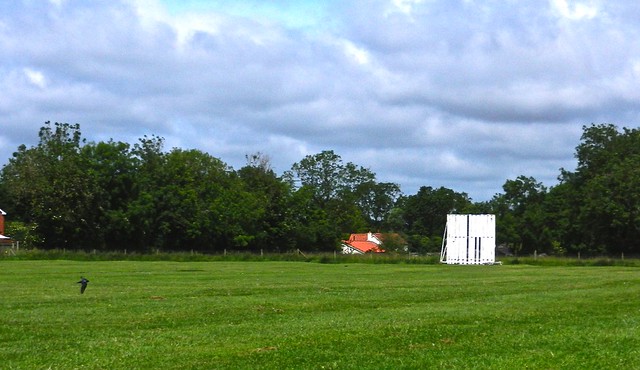Trying to get a photograph of constantly moving, small, high speed fliers is bad enough when they are up in the air. Even more difficult when they are at ground level and rapidly covering the whole field, even coming within a few feet of us as we sat and watched. I tried a few speculative shots with the Nikon and hoped for the best and this was the only one which managed to catch sight of a Swallow:

It is near the bottom left of the photo. All I did was point in the general direction and shoot when they got reasonably close. Far from a brilliant shot but the first I have managed.
It has been estimated that Swallows can achieve a speed in excess of 11 metres per second, 24 mph.

go, mosquito eaters, go!
ReplyDeleteThey do a good job TWG
DeleteSwallows are among my most favorite of all birds. They're so graceful :-)
ReplyDeleteThey are OE. I could watch them all day.
DeleteLow level flying at its best.
ReplyDeleteIt is Frank. I wish my reactions were half as fast.
DeleteShooting swallows, thats a very difficult outdoor sport John.{:))
ReplyDeleteI was reading about some summer visitors observed at Portland Observatory are already leaving and going South again. Perhaps they know something we don't.
It is Roy. I think I saw something about early leavers. Changes in weather patterns are confusing many creatures, including this one!
Delete